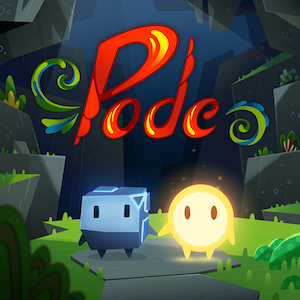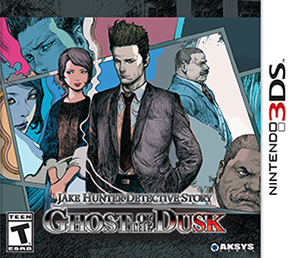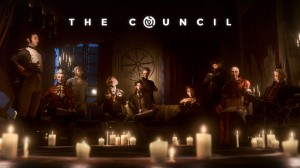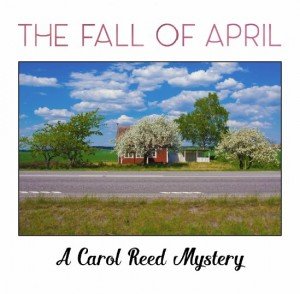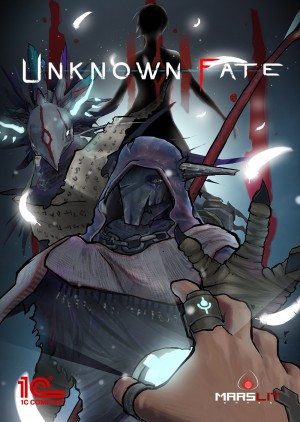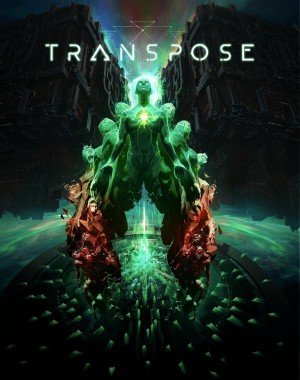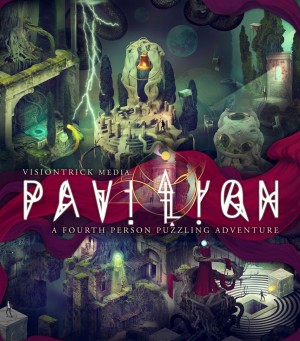Review for Pode

Look near the bottom of the “things that are cute and whimsical” list and you might find basic geometric shapes: with their angles, edges, and plain faces, there’s little about them that would normally be considered charming. But that hasn’t stopped indie developer Henchman & Goon from crafting its environmental puzzler Pode around two such shapes with surprising effectiveness. The adorable dual main characters could have been taken straight out of one of Pixar’s animated features, and the two-player gameplay, though entirely playable solo if you prefer, makes for what could be considered a great example of a “date game.”
Pode tells the story of a walking rock cube who helps a fallen spherical star reach the top of a mountain in order to launch back home. Along the way, they must solve a number of environmental puzzles in order to ascend the mountain’s cavernous interior, while players get to experience a developing bond of friendship between two unlikely companions. It doesn’t take long for these two tiny adventurers to make their way to the game’s end, but there are a few nice character moments in their travels that will endear the pair to player hearts, particularly toward the end.
Even though the game only lasts around four hours or so, each level features a satisfying progression of light challenges that culminate in a tougher puzzle at the end, opening up a new area to enter and repeat the process. In order to reach the top of the cave and exit to the mountaintop, Cube and Sphere must collect and provide water for special seeds that grow into a large tree-like plant in the game’s hub area for them climb ever higher.
Whether playing alone or enjoying couch co-op, our pair of heroes must collaborate to progress through all of the puzzle areas. This may mean something as simple as one activating a switch that raises a platform the other is standing on, or stacking both characters on top of each other to enable a sort of double jump to reach a just-out-of-reach ledge. While the verbal coordination required of two players tackling these challenges together makes for the optimum way to experience the game, the PS4 controls are designed in such a way that it is very simple to pull off every maneuver on your own. A quick button press switches control from one companion to the other, so it’s possible to initiate a stacked jump, then quickly switch control and perform a second, boosted jump with the topmost character.
The one caveat to this is the necessity, when playing alone, to maneuver both characters to each scene’s exit before moving on to the next. At times this makes for some additional twists on puzzles, as one character may have made the other’s progress possible but now faces some unique challenges in order to reach the exit. Other times it’s just a matter of walking both characters across an open area. Rather than doing this one at a time, a welcome ability is the added benefit of being able to make the pair hold hands by keeping a button pressed, allowing for simultaneous travel even for a solo player.
Cube and Sphere also have unique physical attributes to consider. Sphere is feather-light, able to walk across water and float along a strong breeze, while Cube sinks – literally – like a stone but is impervious to strong winds. These physical traits can even be felt when simply holding hands and maneuvering the pair across terrain: after a combined jump, it will take Sphere a few moments longer to return to the ground, somewhat throwing off the timing of having both characters, say, climb a staircase of consecutive rock ledges.
Each protagonist is also able to emit a unique aura at the press of a button, which plays significantly into problem-solving. Cube can activate crystal mechanisms with his aura and weigh down floor switches by simply stepping on them, while Sphere’s aura can bathe her surroundings in light to illuminate enigmatic patterns and murals etched into walls and surfaces within the cave.
Occasionally hidden symbols include clues to puzzles, such as having to decipher a rudimentary number system or being able to correctly insert puzzle pieces into their appropriate slots by matching symbols laid bare in Sphere’s light. A lot of these are purely decorative, but there was one particular puzzle that had me stumped for quite a while simply because I had missed lighting up a vital clue for its solution nearby. Early in the game, Sphere also receives access to a teleport ability, which is employed heavily from that point on. There’s a slight criticism here, in that rather than a steady evolution of puzzles that take advantage of a progression of new unlockable abilities, the lion’s share of puzzles revolve around the same mechanic once it’s been revealed, and little else.
There is one final ability granted towards the very end, which plays a role in the last few puzzles, though oddly enough (and seemingly through the designer’s oversight), a clever use of this ability actually lets you completely skip the final puzzle area and proceed directly to the end cinematic.
The protagonists’ use of unique auras has also been woven into Pode's visual design, or rather into the way it changes as a result of their presence. The cavernous 3D environments inside the mountain setting are, on the whole, designed to be rather drab, at least initially. By activating their auras while exploring their surroundings, Sphere and Cube have an immediate, dramatic effect on the landscape. Pebbles puff up like exploding popcorn kernels and crystal shards crackle and snap into grand crystalline structures, wondrous flowers bloom and lush vegetation begins to spring forth from even remote nooks and crannies.
The effect is an arresting transformation that is quite satisfying to observe, caused by simply walking around. Making sure to step into each corner and every square inch of available space in order to do the most thorough job possible enhancing the environments becomes a game in its own right, at times more engaging than the actual puzzle solving needed to progress. The aesthetic itself is very soft, with large open areas designed to emphasize these transformations as color begins to fill the otherwise uninteresting space. Being set entirely underground, sources of light are given special consideration on-screen, contrasting nicely with the relative darkness that exists elsewhere. The graphics, like the game’s other facets, are simple yet effective, and do their part in conveying a pleasing sense of peaceful quiet.
Composer Austin Wintory, who has made a name for himself on numerous other games, has provided the background music for Pode, setting the exploration against an almost constant backdrop of soothing synth-string tunes. While the tracks coincide with the serenity of the visuals and gameplay, they don’t really serve to underscore specific emotional highs or offer particular musical moments that get caught in the listener’s ear; they’re quite serviceable, but not quite memorable. Instead, Cube and Sphere’s nonsense chirps and glorks, along with the animation evident in their cartoon eye slits and stubby arms and legs, do all of the heavy lifting of communicating their emotions without a single spoken word.
Pode is a very nice first effort from Henchman & Goon, providing a short but satisfying puzzling experience, though the game’s charm comes largely from its nicely designed and animated duo of lead characters and the ancillary game mechanic of having them use their auras to morph their surroundings in satisfying ways. It all adds up to a uniquely pleasant experience that helps connect you to the heartwarming relationship on the screen and ultimately makes for something pretty special: a title you could play alone but is really a perfect fit for a stay-in date night around the game console.
WHERE CAN I DOWNLOAD Pode
Pode is available at:
We get a small commission from any game you buy through these links (except Steam).Our Verdict:
Players looking to tackle Pode on their own will experience a cute, fun puzzler with at least a few moments of challenge before the end. But those who bring a friend or significant other will arguably reap the greatest reward in this short but sweet wordless tale of love and friendship.


